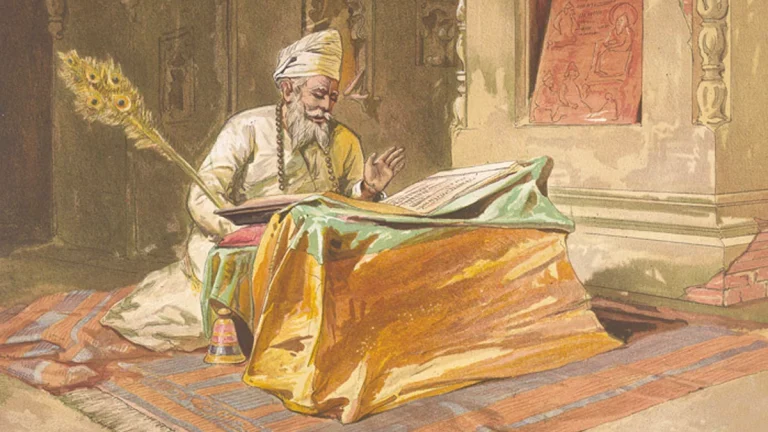Manvir Vohra teaches world religions at seminaries in North India and trains pastors and leaders in Punjab and other parts of North India. He also led the team that compiled the first dictionary of the New Testament in the Punjabi language.
A History of the Sikhs, Vol. 1 (1469-1839)by Khushwant Singh
In A History of the Sikhs, Vol. 1, incendiary writer, lawyer, diplomat, journalist and politician Khushwant Singh presents a well-researched work on the origins and beginnings of the faith. Written in easy-to-understand language, this book is of immense value in its non-hagiographic and pragmatic approach.
The early chapters of the book address the religious, cultural, and political environment of India and include a discussion of ten gurus who founded and developed the faith. Singh then recounts major developments in the religion, devoting chapters to important figures in Sikh history such as the warrior Banda Bahadur. The book studies the early organization of the Sikhs into loosely organized armed units, their skirmishes with the political powers and invaders of Punjab and northern India, and the formation of the first Sikh empire under the leadership of Ranjit Singh.
This particular volume provides an excellent introduction for readers who wish to learn more about the Sikh religion and its development. It recounts the initial period of the faith’s origins, its transformation from a purely devotional religion to one that also bears arms, and its ascendancy into a kingdom ruled by a competent leader.
A History of the Sikhs, Vol. 2 (1839-2004)by Khushwant Singh
Singh’s second volume opens with the death of Ranjit Singh and the start of the Anglo-Sikh Wars. It then discusses the struggles the community faced to preserve its identity during the colonial period. The author offers a Sikh perspective on the First and Second World Wars, India’s independence from the British, and the partition of the country.
Overall, this volume presents an account of the development of Sikh ideas up to recent times. This is an excellent resource for anyone interested in the historical development of the Sikh faith and the many contemporary issues facing the Sikh diaspora.
Exploring Sikhism: aspects of Sikh identity, culture and thoughtby W. H. McLeod
Explore Sikhism is just one of many significant contributions made by WH McLeod to the understanding of the historical, religious, cultural and political influences that gave rise to Sikhism and helped shape it into what it is today. His work deserves to be studied beyond the current volume.
McLeod’s overall contributions to bringing Sikhism to a Western audience have not only inspired other scholars to attempt to explain the origins of this unique religion, but have unfortunately also sparked criticism and opposition within the Sikh community. .
McLeod asks insightful questions about the inspirations of the founder of Sikhism, Guru Nanak, while also attempting to provide reasonable answers to these questions. He dismantles the common idea that Sikhism is a mixture of Hinduism and Islam and instead proposes that Nanak’s mission is an offshoot of the North Indian Sant tradition. (The Sant tradition was a widespread revivalist and reformist religious movement that included prominent members like the poet Sant Kabir.)
McLeod convincingly defends Sikhism against the hypothesis of voluntary syncretism between Hinduism and Islam and attempts to establish its foundations within the Sant tradition. For someone interested in the origins and claims of Sikhism, these observations enrich the understanding of the faith, although some Sikh scholarship has responded to McLeod with a trenchant response.
The Christian Witness of Sadhu Sundar Singh: A Collection of His Writingsedited by T. Dayanandan Francis
When it comes to Christian evangelism among the Sikhs, the great Indian saint Sadhu Sundar Singh should be mentioned. Known as “the apostle with bleeding feet,” Singh’s life and missionary expeditions had a great impact on those who heard him preach or read his writings.
Born into a Sikh family in Punjab in the late 19th century, Singh was raised by a religious mother in an Indian context. He met Jesus at the age of 15 and grew up to become a Christian sadhu (an ascetic holy man) who preached Christ. His life, teachings and ministry continue to be an inspiration to many. Instead of falling into the mold of Western Christianity, Sundar adopted a very traditional Indian approach to the gospel.
This book is a collection of his writings. It begins with an introduction to the life and conversion of the sadhu. The first section contains short devotional books that he wrote in English and Urdu. These books have been translated into 40 languages and have had a wide impact around the world. There is also a chapter on his sermons and sayings, which he delivered during his various travels around the world.
It is a must-read for those ministering among Sikhs.
“Pastors of Punjab», article by Sunil Menon and Anilesh S. Mahajan
In November 2022, India today published a cover story on the rise of Pentecostal preachers in the state of Punjab. The majority of these pastors came from Sikh backgrounds and started an indigenous movement.
Not only do these pastors come from various castes in Punjab, but they also include many high-caste Sikhs and Hindus. This runs counter to the notion that Christian evangelism in India is a surreptitious Western program aimed at interfering in Indian affairs by influencing the disadvantaged lower castes. While it is undeniable that some of Punjab’s best-known pastors are adopting the style of Western evangelists, it is also true that many pastors with more modest backgrounds are developing an indigenous expression of their new Christian faith.
Due to the lack of well-researched material on recent “Christward” movements among Sikhs, this article stands out. The highlight of the article is a statement from a preacher who said Sikhism taught him about God, but the Bible showed him how to find God.


